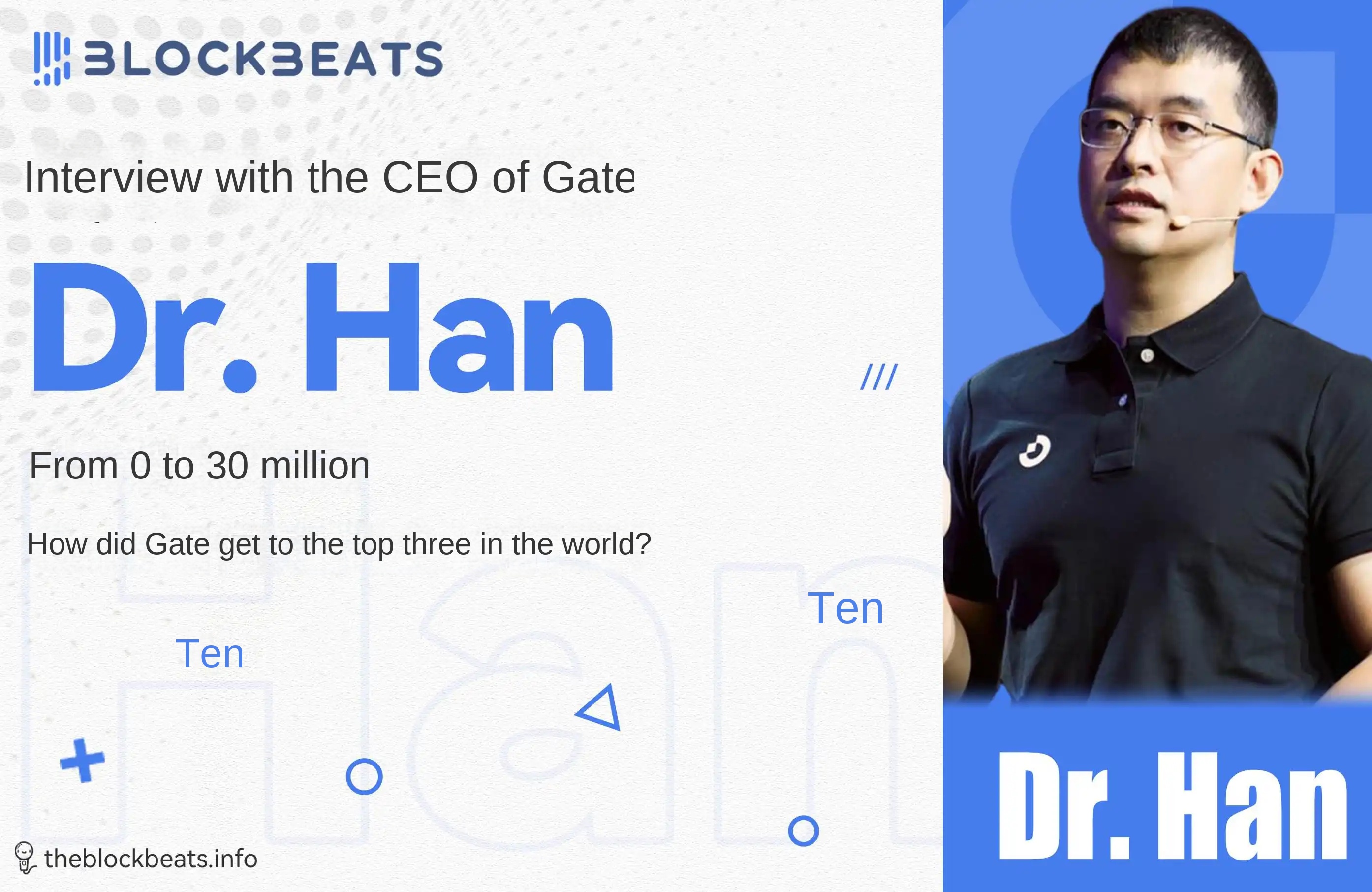Paradigm strikes again, will the new concept of gigagas lead to a new narrative?
Original title: "Interpreting gigagas: Will another new concept from Paradigm, the master of word creation, lead to the emergence of new narratives?"
Original source: TechFlow
Questioning narratives, understanding narratives, and becoming narratives are the classic three steps in crypto speculation.
But the creation of a narrative often originates from a high-sounding word, such as intent, modularization, parallelization... It sounds short and powerful, and makes people seem to understand it --- this sexy technical perception is what we want.
But if you want to ask where these words come from, the top VC Paradigm must deserve the supreme title of "master of word creation".
Last July, Paradigm introduced the top ten trends it was paying attention to, among which the concept of intent-centric was mentioned for the first time.
Then the concept of intent quickly became popular, and projects have leaned on the hot words. The common appeal of "making the user experience better" can be packaged so beautifully with just the word "intention"; the XX protocol based on intention has also become a necessary footnote in the Twitter profiles of new projects.
Recently, the word-making master Paradigm has made another move. Its CTO published an article titled "Reth's path to 1 gigagas per second, and Beyond". The key word in it is naturally "gigagas".

Giga is literally translated as a common unit of quantity, that is, one billion or one gigabyte; and gas is obviously the well-known gas fee.
But when the two words are combined --- one billion gas?
Well, it’s still the familiar short and powerful, concise, half-understood and powerful feeling.
From TPS to GPS, the new standard of word maker
In fact, the gigagas newly proposed by Paradigm is related to the performance of blockchain.
In the inherent thinking, when we say whether a blockchain is fast or not, we measure it with TPS (transactions per second), that is, the number of transactions that can be processed per second.
But Paradigm's CTO believes that "Gas Per Second" (GPS) is a more accurate measure. This is because:
1. Measurement of computational workload:Gas is a unit of measurement of the computational workload required to perform an operation (such as a transaction or smart contract), so GPS can more accurately reflect the amount of computation that the network can handle per second.
2. Reflection of capacity and efficiency:Using GPS as a performance indicator can provide a clearer understanding of the capacity and efficiency of the blockchain and help evaluate system costs.
3. Defense against DOS attacks:Standardizing performance indicators to GPS can better protect against potential Denial of Service (DOS) attacks, which may be exploited using less accurate measurements.
4. Cross-chain performance comparison:Using GPS helps to compare the performance of different EVM-compatible chains, because different chains may have different computational complexities in transaction processing.
Therefore, it would be better to use GPS instead of TPS to measure the performance of the blockchain, and Paradigm recommends in the article that the EVM community adopts the amount of gas per second as a standard indicator, and combines other gas pricing dimensions to create a comprehensive performance standard.
If we follow Paradigim's idea and use the amount of gas that can be consumed per second to comprehensively evaluate the performance of the EVM network, while capturing the computing and storage costs, then the current mainstream L1 and L2, GPS ranking should be like this:

*Deep Tide Note: The data mg in the table refers to milligas, which is "one thousandth of gas". The larger the value, the more computing power the blockchain network can process per second, that is, the better the performance. According to the table data, opBNB is the highest among all the networks listed.
This means that compared to other blockchain networks, opBNB in this article can perform more calculations per unit time and handle more or more complex transactions and smart contracts. However, the performance evaluation should also consider other factors, such as the security of the network, the degree of decentralization, and the fee structure.
1 gigagas, VC rolls up infrastructure by itself
However, what Paradigm wants to do is far more than the numbers in the table above, but to achieve GPS of 1 gigagas, that is, the blockchain can consume 1 billion units of gas per second.
In the early years, Paradigm started to develop Reth, an Ethereum execution client, in Rust.
The goal of Reth is to optimize execution performance and increase the number of "gas" units that can be processed per second, thereby enhancing the performance of the entire Ethereum network.

From the public data in the article, Reth can already reach 100-200MB gas per second (including sender recovery, transaction execution and calculation of trie for each block); therefore, to achieve the goal of 1 Gigagas per second, it needs to be expanded 10 times.
The solution given by Paradigm is to vertically and horizontally expand the Reth developed by itself.
As for how to expand, since this part is too technical and not suitable for ordinary readers, we have simplified it here to quickly understand the general idea of things.
The so-called vertical expansion is like replacing a machine with a more powerful engine or adding more memory so that it can carry more workload. The main purpose is to improve the processing power of the original single server or node.
The specific methods that Paradigm can think of are:
· JIT / AOT EVM: By just-in-time (JIT) or ahead-of-time (AOT) compilation of EVM, the overhead of the EVM interpreter is reduced, thereby speeding up single-threaded transaction processing. It is said that the execution time can be halved.
· Parallel EVM: Using multi-core processors to execute EVM, more transactions can be executed simultaneously. This is because historically up to 80% of EVM transactions have no conflicting dependencies and can be executed in parallel.
· Parallel, pipelined, modified state root: Reduces the overhead of calculating the state root. The state root calculation accounts for the majority of the block time, more than 75%, so optimizing this point is a key step to significantly improve efficiency.

Horizontal expansion is equivalent to adding more processing units to the system, just like adding more production lines in a large factory. By adding more processing units to share the workload, the overall capacity of the system can be expanded without adding pressure to a single node.
The specific methods that Paradigm can think of are:
· Multi-Rollup Reth:Reduces the operational overhead when running multiple rollups, which means that multiple rollups can be started in the same process, thereby minimizing the operational costs of running thousands of rollups.
· Cloud Native Reth:Capacity is expanded by distributing tasks across multiple machines. This is similar to cloud computing architecture, allowing the system to automatically scale on demand and use cloud object storage to persist data
It doesn’t matter if you don’t understand these, we just need to understand that the essence of this matter is:
Paradigm developed an Ethereum client on its own, proposed a new standard for measuring EVM performance, and wanted to use various methods to increase this new standard (GPS) to 1 gigagas.
VC takes the lead in rolling up infrastructure and stacking performance, and finally achieves much faster execution efficiency than the existing Ethereum and other EVM public chains, so that the blockchain can consume more gas and execute more tasks per unit time, paving the way for the chain itself to carry large-scale applications.
From here, we can also see that Paradigm not only invests money to let others do L1/L2, but also invests resources to develop performance, making multiple bets to make infrastructure better.
Word creation never stops, customer acquisition never starts
Obviously, gigagas is a more hardcore concept, far less than the intention that anyone can get involved.
Perhaps in the future, each L1/L2 will show that its performance can reach 1 gigagas or even more; but application layer projects may not be directly related to this word.
However, in the current situation where narrative is lacking, one more concept also has the possibility of grabbing attention.
Teacher Pan also pointed out that encrypted word creation needs to be easy to read, easy to understand and original. From this perspective, gigagas meets several conditions and can indeed make people feel novel.

However, now there are so many L1/L2, so many new stories and new concepts about performance. After all the competition, where are the applications that can be shown?
Or is it that as long as the infrastructure is strong enough, applications will come out sooner or later, so everyone should invest in infrastructure first?
In my opinion, gigagas may not be as important as gigauser (one billion users). Perhaps performance is a prerequisite for achieving user scale, but performance may not necessarily bring users.
There is still a long way to go to improve the experience of encryption products and attract users.
Original link
Welcome to join the official BlockBeats community:
Telegram Subscription Group: https://t.me/theblockbeats
Telegram Discussion Group: https://t.me/BlockBeats_App
Official Twitter Account: https://twitter.com/BlockBeatsAsia
 Forum
Forum OPRR
OPRR Finance
Finance
 Specials
Specials
 On-chain Eco
On-chain Eco
 Entry
Entry
 Podcasts
Podcasts
 Activities
Activities








